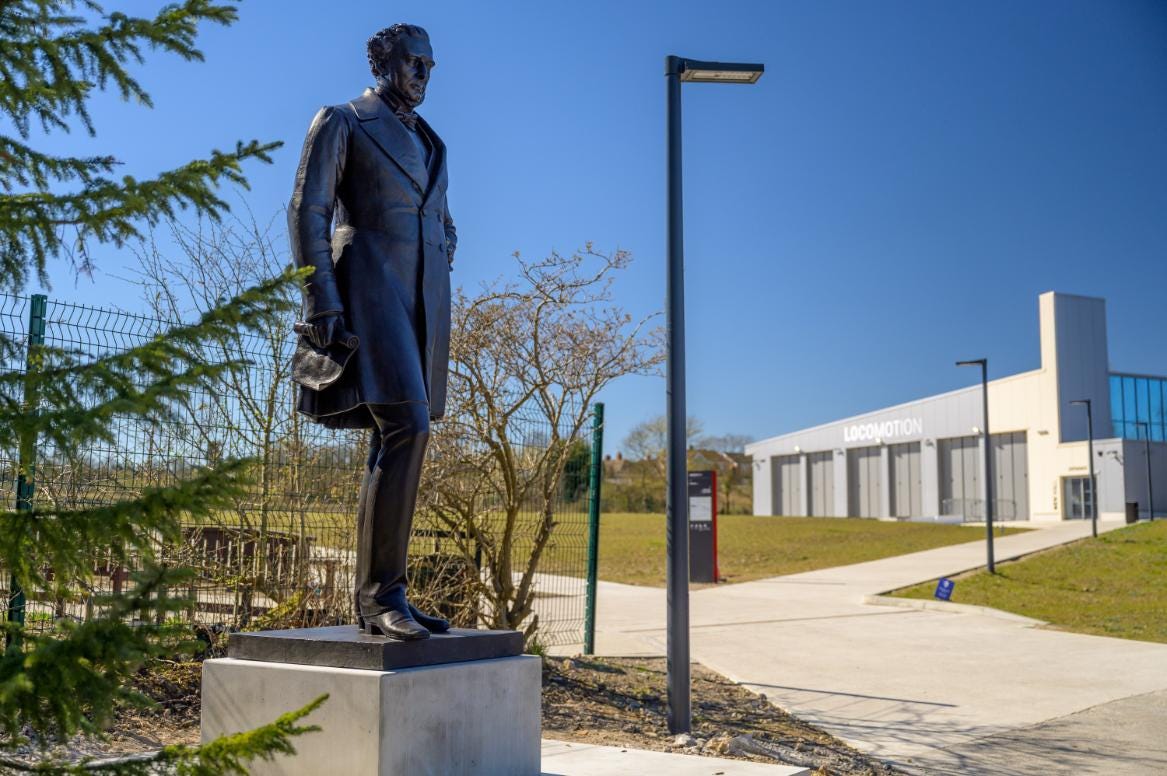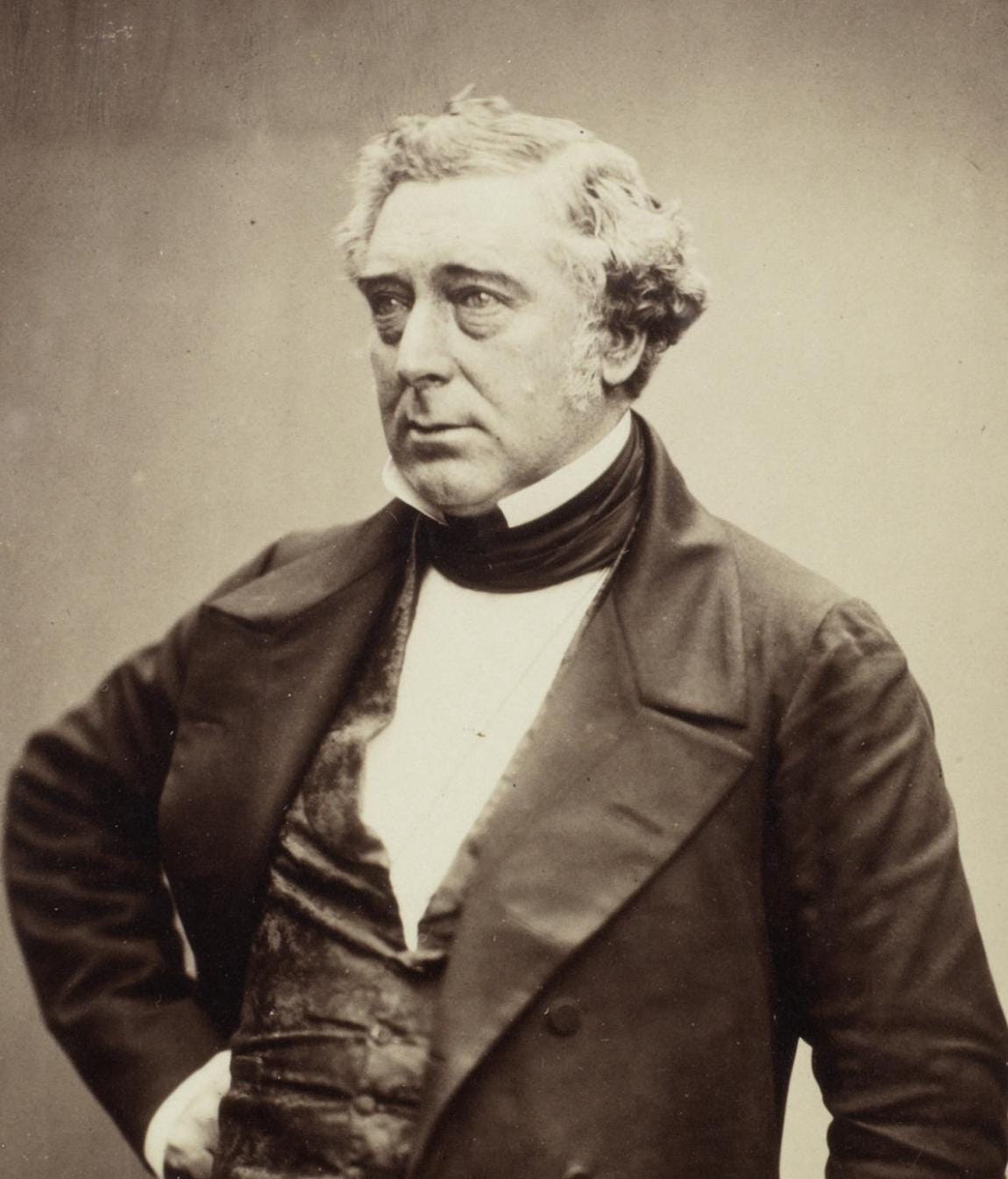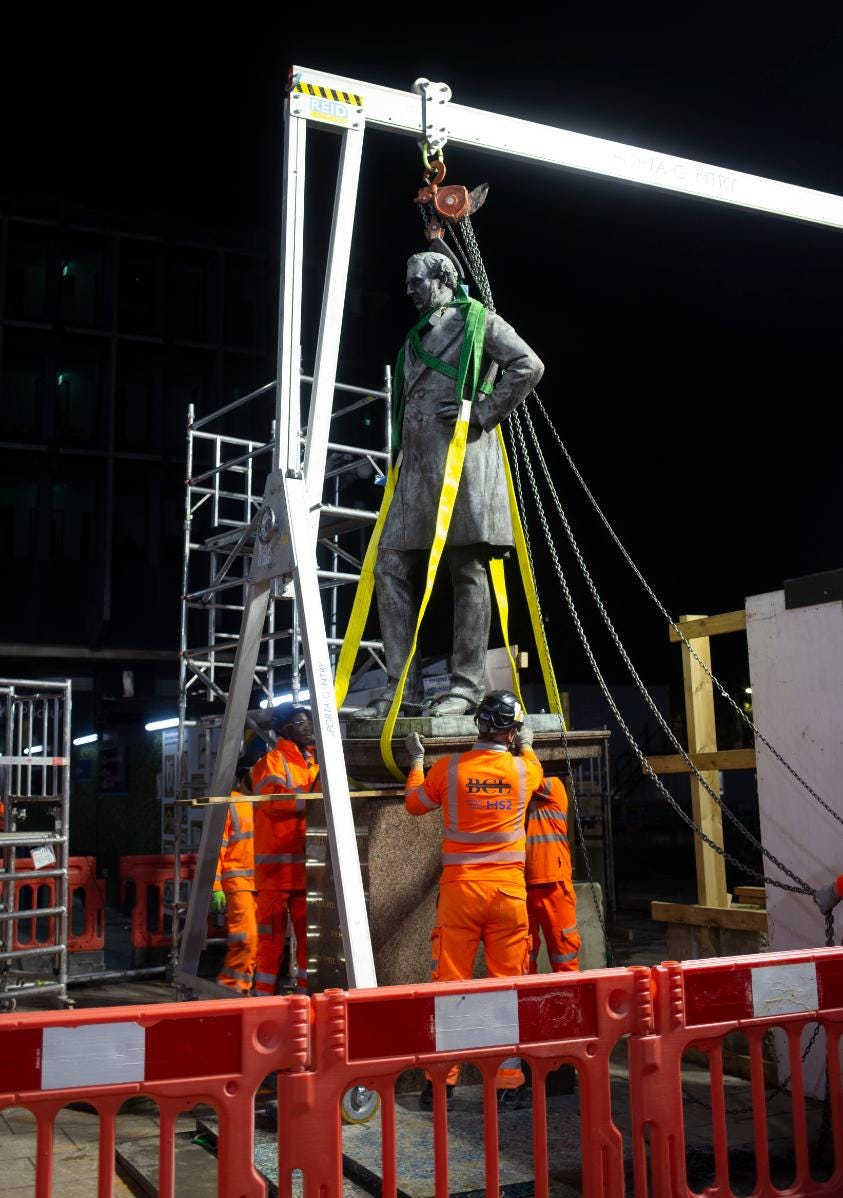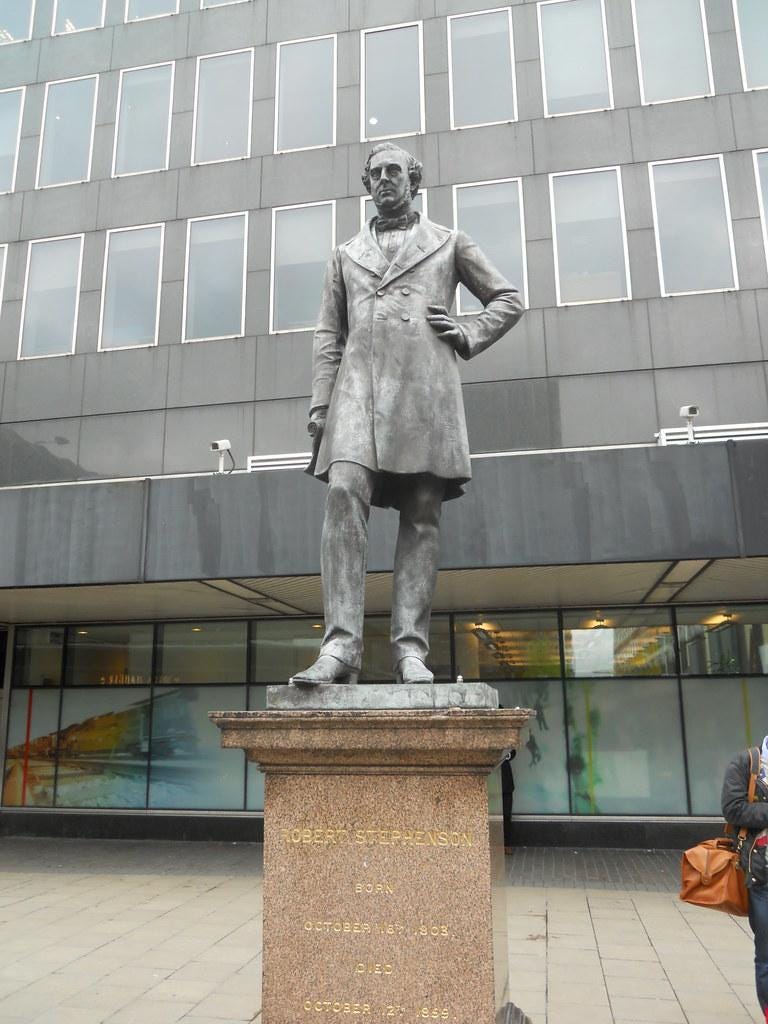The engineer returns: Robert Stephenson statue pulls into Shildon
Loan move for one of the North East’s stars. Tony Henderson reports
The historic bronze statue of great engineer Robert Stephenson, has gone on display at the Locomotion, the railway museum in Shildon, County Durham.
One of the North East’s greatest achievers started life in a row of one-room workers’ cottages on the banks of the Tyne.
But such was his stellar career Stephenson, born in 1803 at Willington Quay in what is now North Tyneside, was accorded the high honour of burial in Westminster Abbey.
And in 1871, the statue was unveiled at Euston Station, which he was involved in developing.
This month, the listed 8ft 10ins statue has been installed near the entrance of Locomotion’s Main Hall and coincides with the 200th anniversary celebrations of the history-making Stockton and Darlington railway.
Rpbert is positioned opposite Gaunless Bridge, designed by his father George in 1823. The bridge was restored and sited at the museum last year.
Sarah Price, head of Locomotion, said: “We are thrilled to welcome this magnificent statue to Locomotion. As one of the most influential engineers in railway history, Robert Stephenson’s legacy is deeply connected to Shildon, the world’s first railway town.
“Having this iconic monument on display alongside the pioneering locomotives and engineering marvels he helped to inspire is a fantastic boost for Locomotion and for the region during a landmark year in railway history.
“Robert built on the great achievements of his father, George. His innovative thinking allowed for the significant expansion of railways during the mid-19th century’s ‘railway mania.’ His skills in civil and mechanical engineering helped establish the railway system in this country, which was then adopted worldwide.”
The monument, which stands on a base of polished Aberdeen pink granite, was commissioned by the Institution of Civil Engineers in 1859, the year of Robert’s death at the age of 56, and was gifted to the London and North Western Railway.
It was placed in storage in 2020 while the station undergoes its major HS2 redevelopment and has now been loaned to Shildon by its owners Network Rail.
A Euston spokesman described the statue as a “tremendous part of railway history.”
Among his many achievements, Robert Stephenson developed the London and Birmingham Railway which opened in 1838. It was the first intercity railway into London and sparked the “railway mania” of the mid-19th century.
Robert Stephenson & Co, the world’s first locomotive works, was founded in 1823 in Newcastle.
He spent three years from 1824 in Colombia in South Aerica, on a silver mines project and after returning to Newcastle he and his father entered their locomotive Rocket in the Rainhill Trials.
Its winning performance proved that such locomotives were the way ahead.
Locomotion at Shildon is home to the largest collection of historic locomotives undercover in Europe, including Rocket,
For the Chester & Holyhead Railway and the Newcastle & Berwick Railway, Robert designed four major bridges, all still in use today.- the Conway (1848) and Britannia (1850) bridges in North Wales , the High Level Bridge (1849) between Newcastle and Gateshead carrying both a railway and a roadway on cast iron spans, and the Royal Border Bridge over the River Tweed.
He also worked on the Victoria Bridge over the St. Lawrence River in Montreal and bridges over the Nile for the Egyptian Railway between Alexandria and Suez via Cairo.
On the day of his funeral, ships in the Tyne flew their flags at half mast, shops and offices closed at noon, and 1,500 people gathered at St Nicholas Church, including the workforce of the Stephenson factory.







